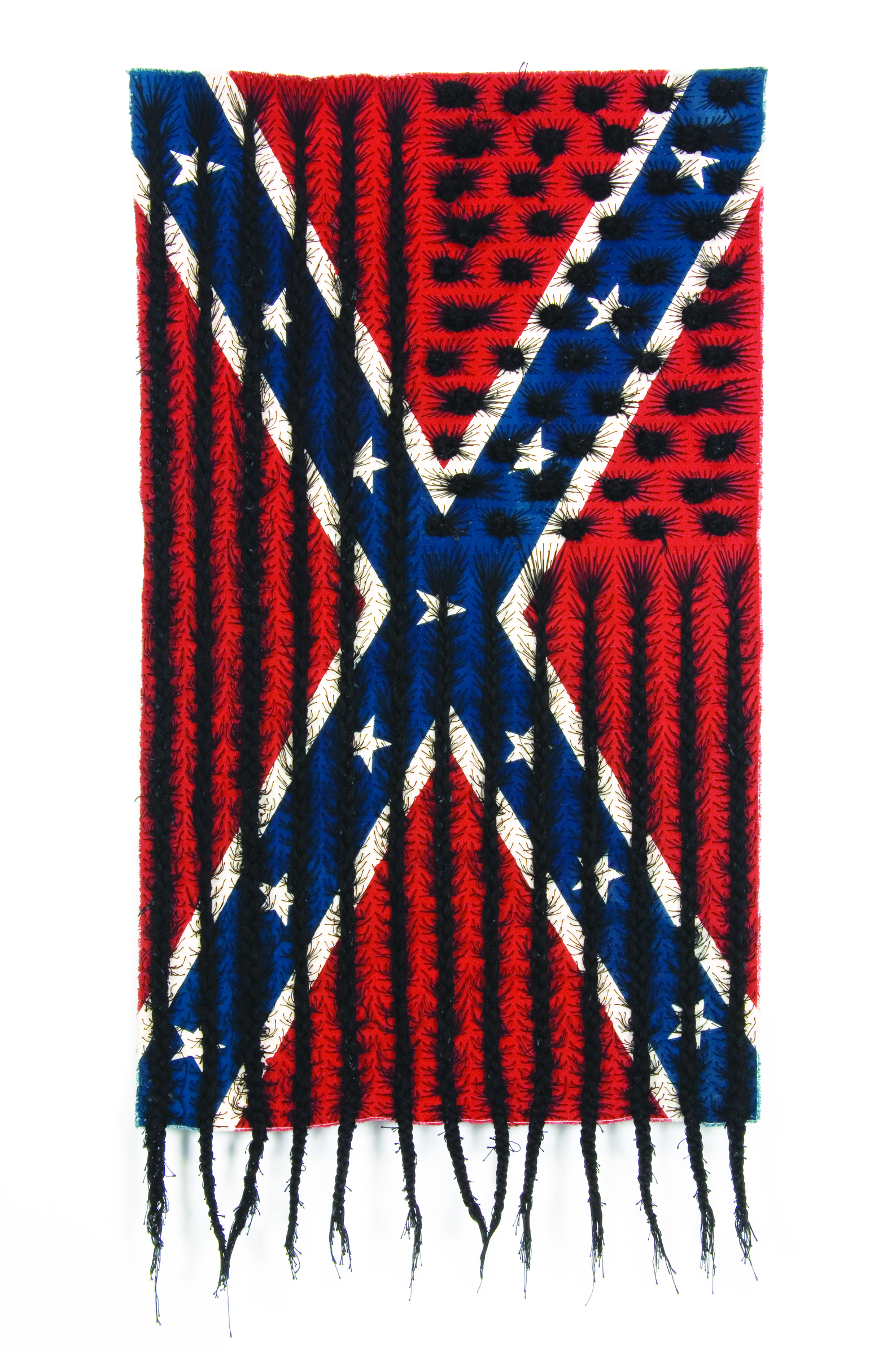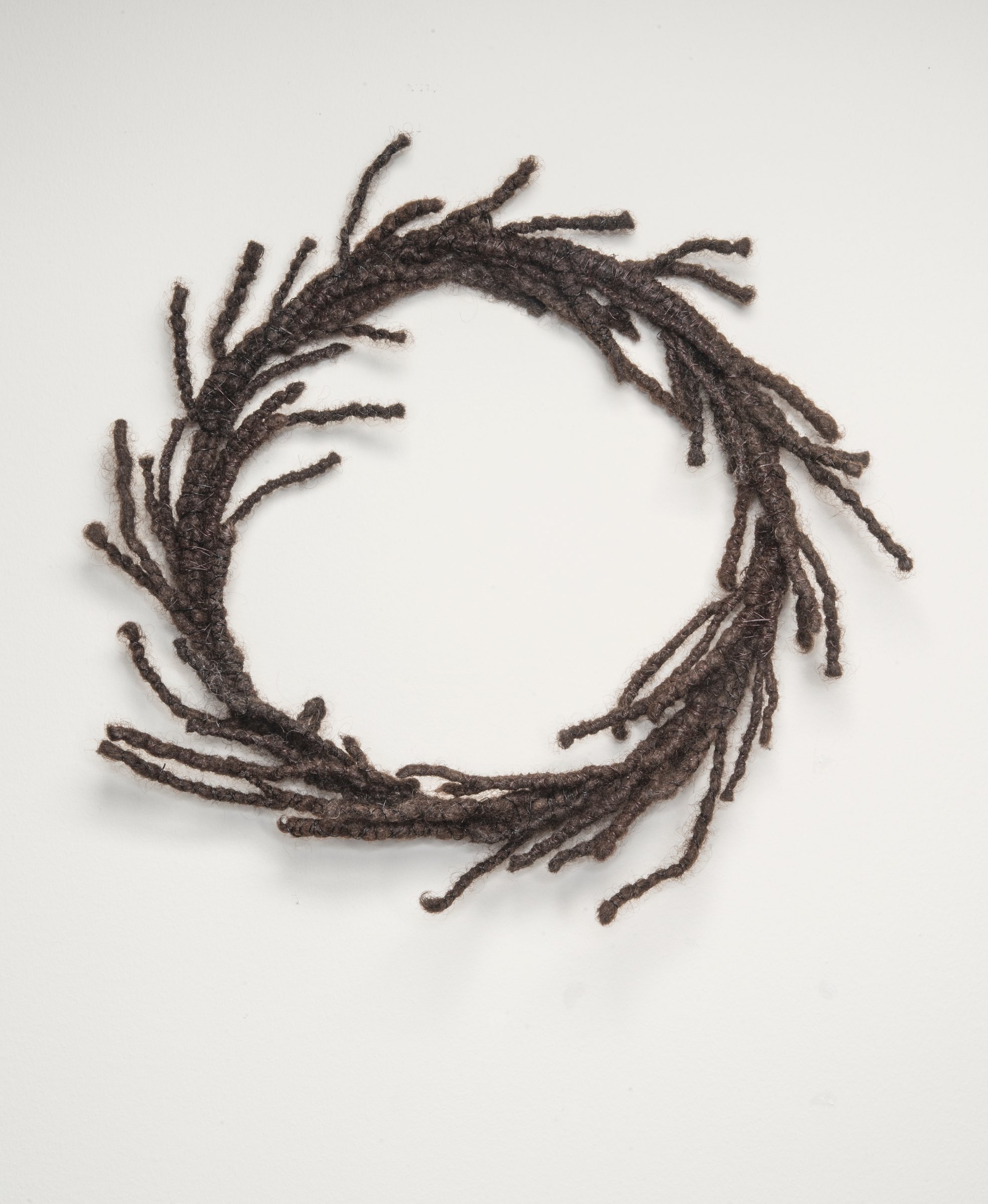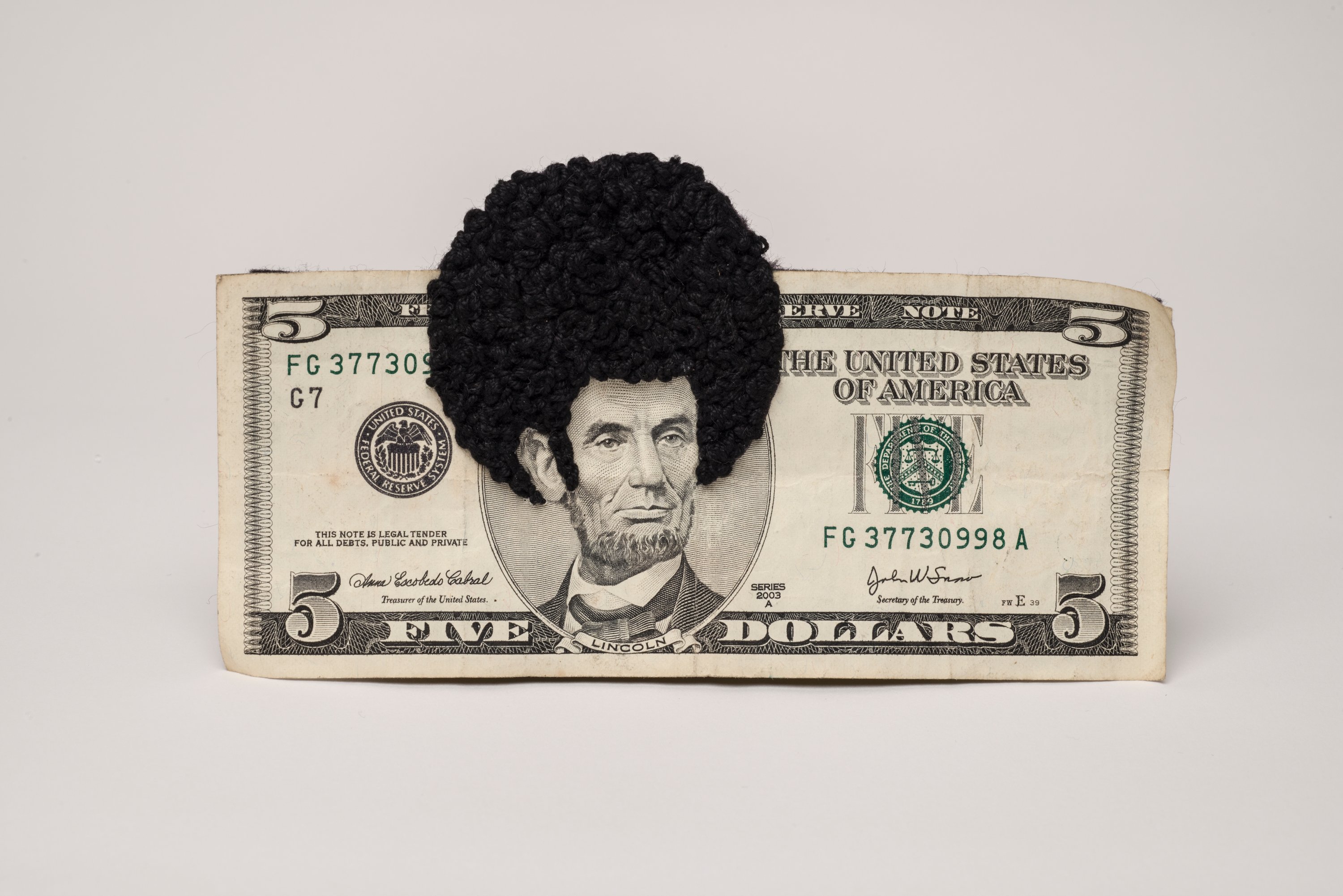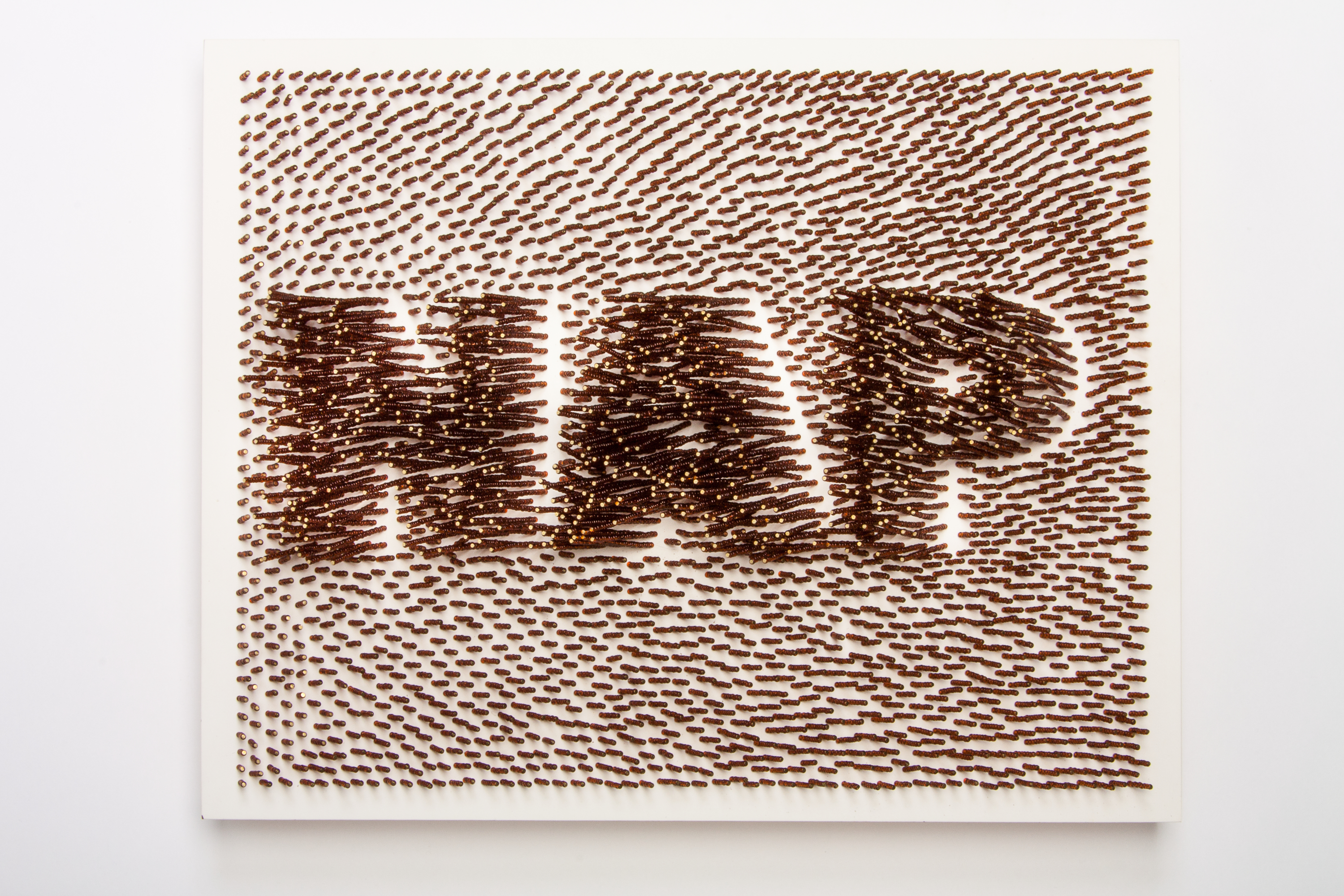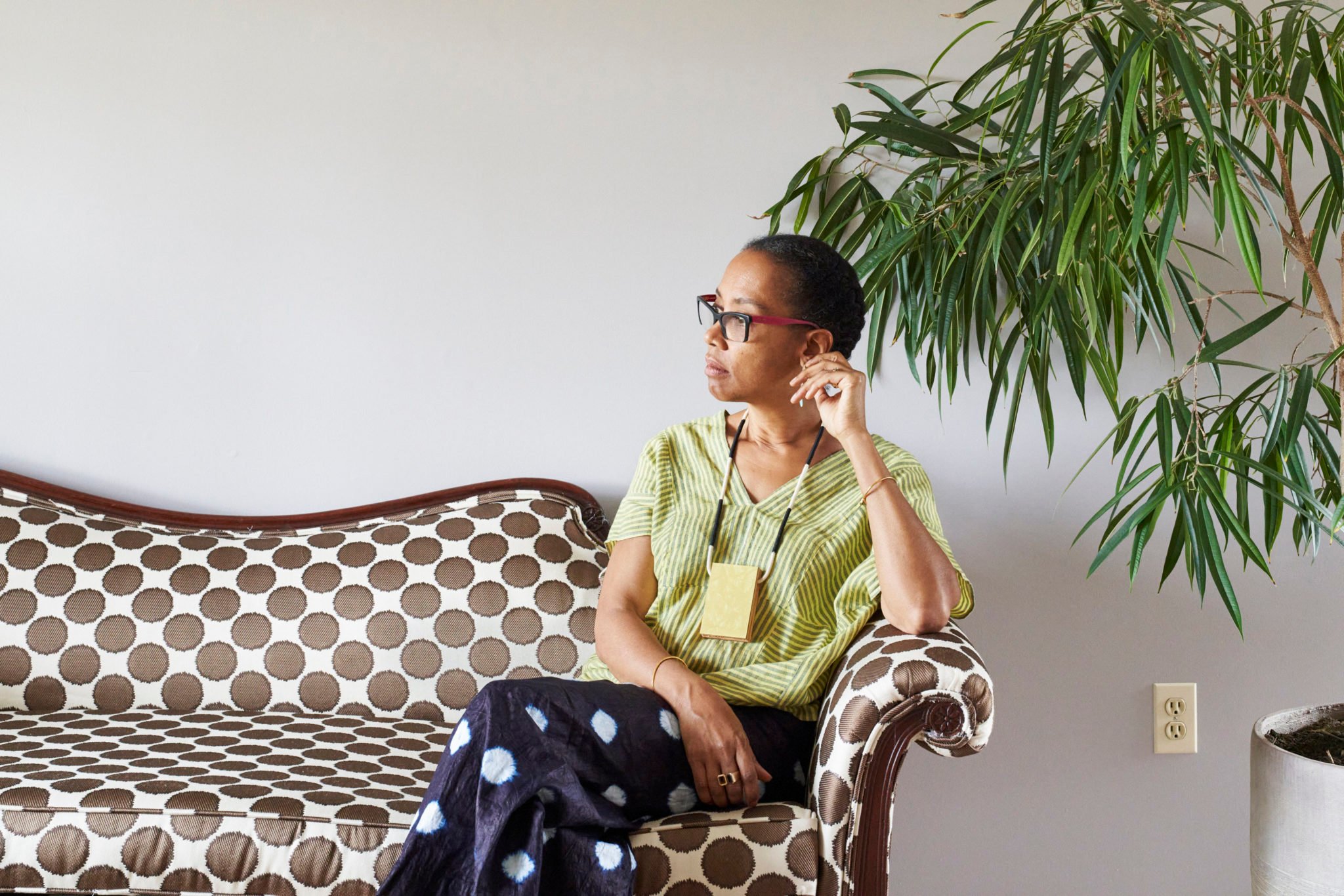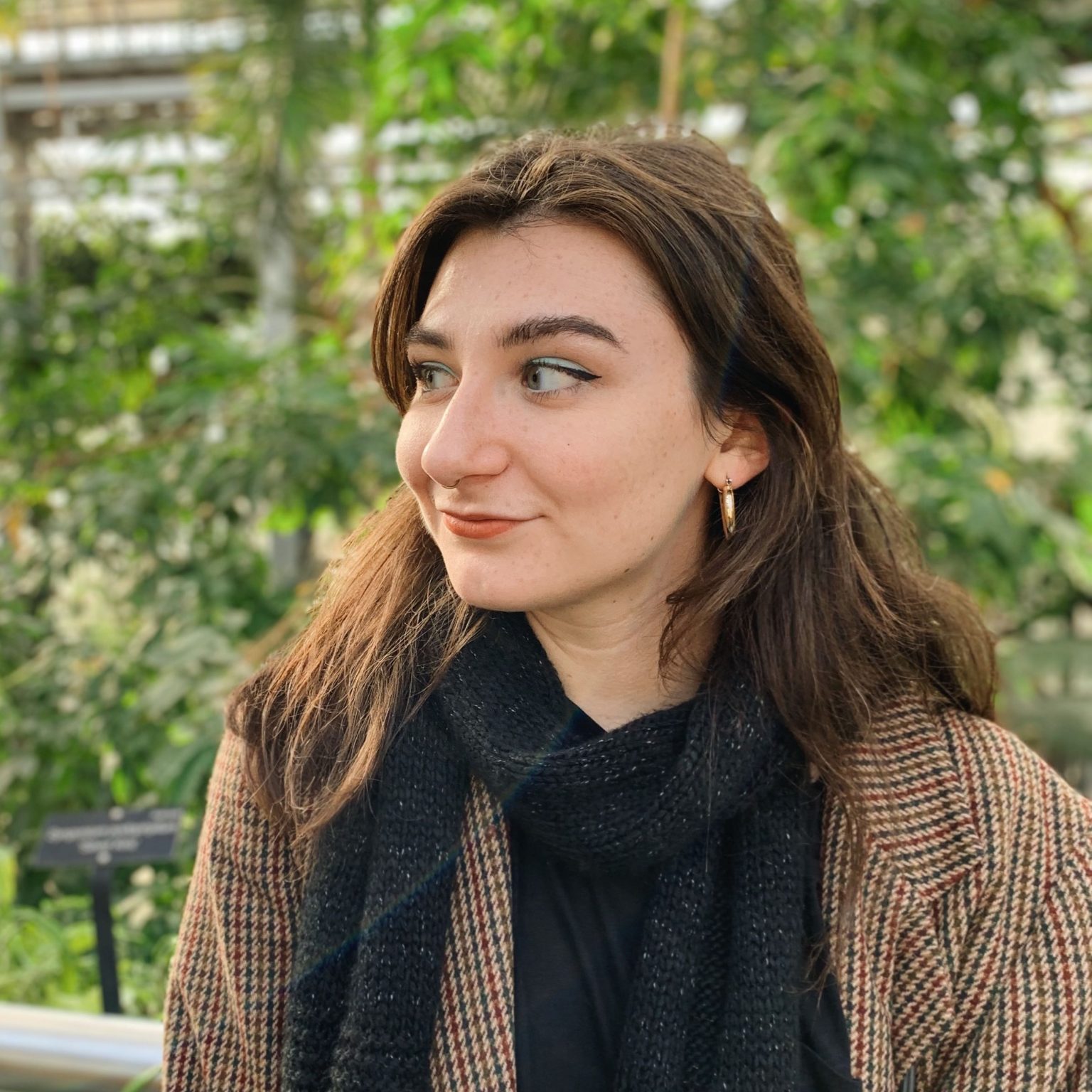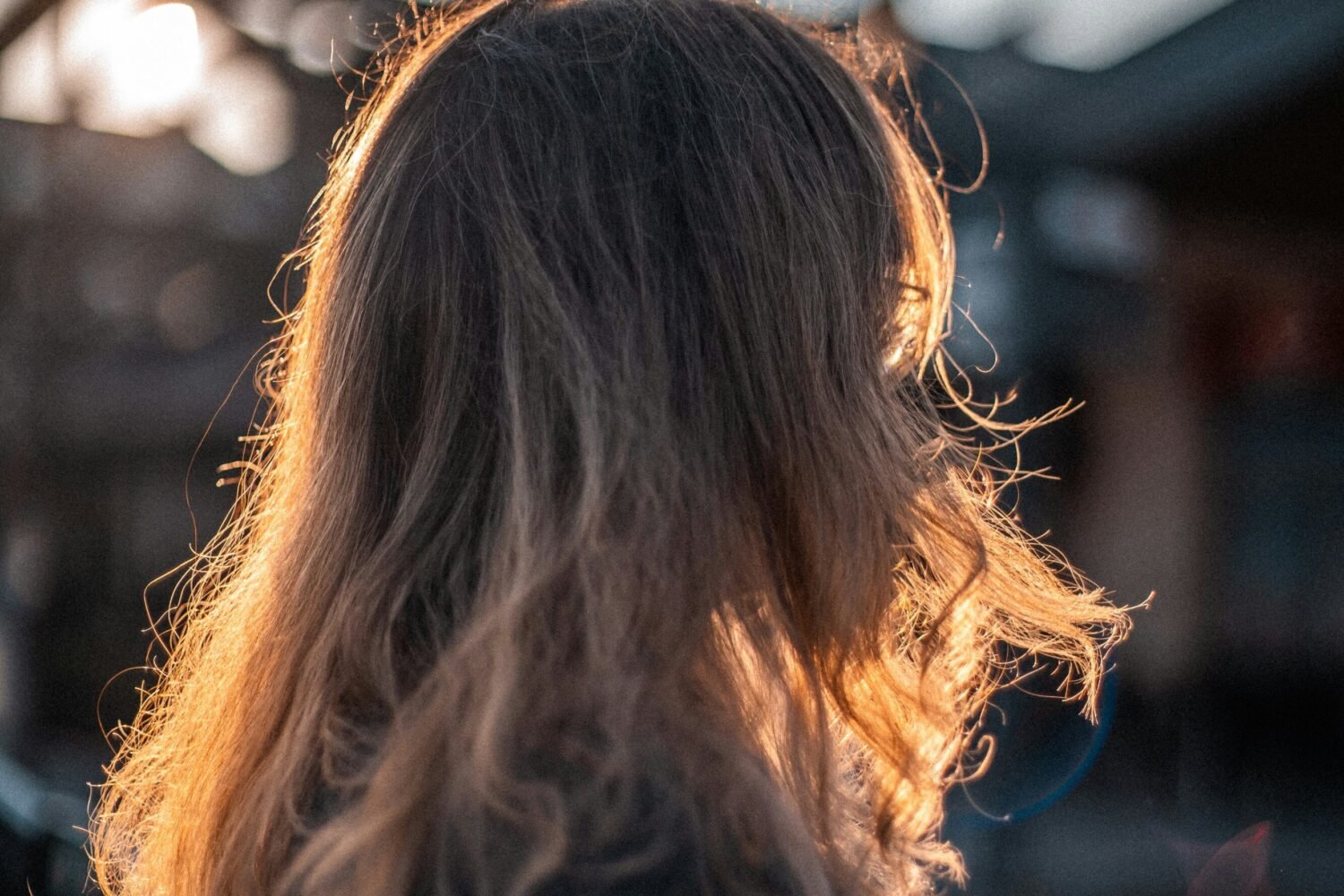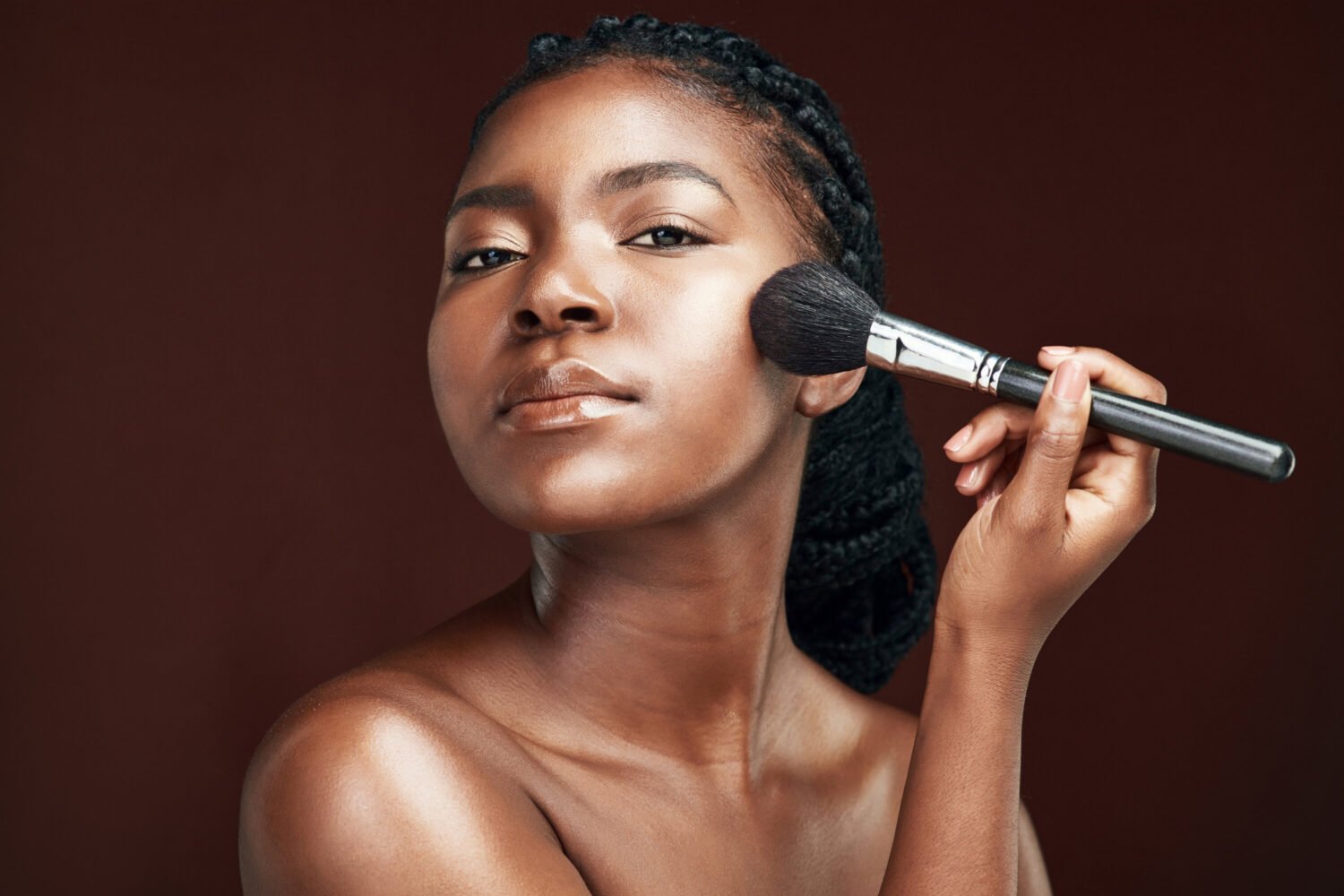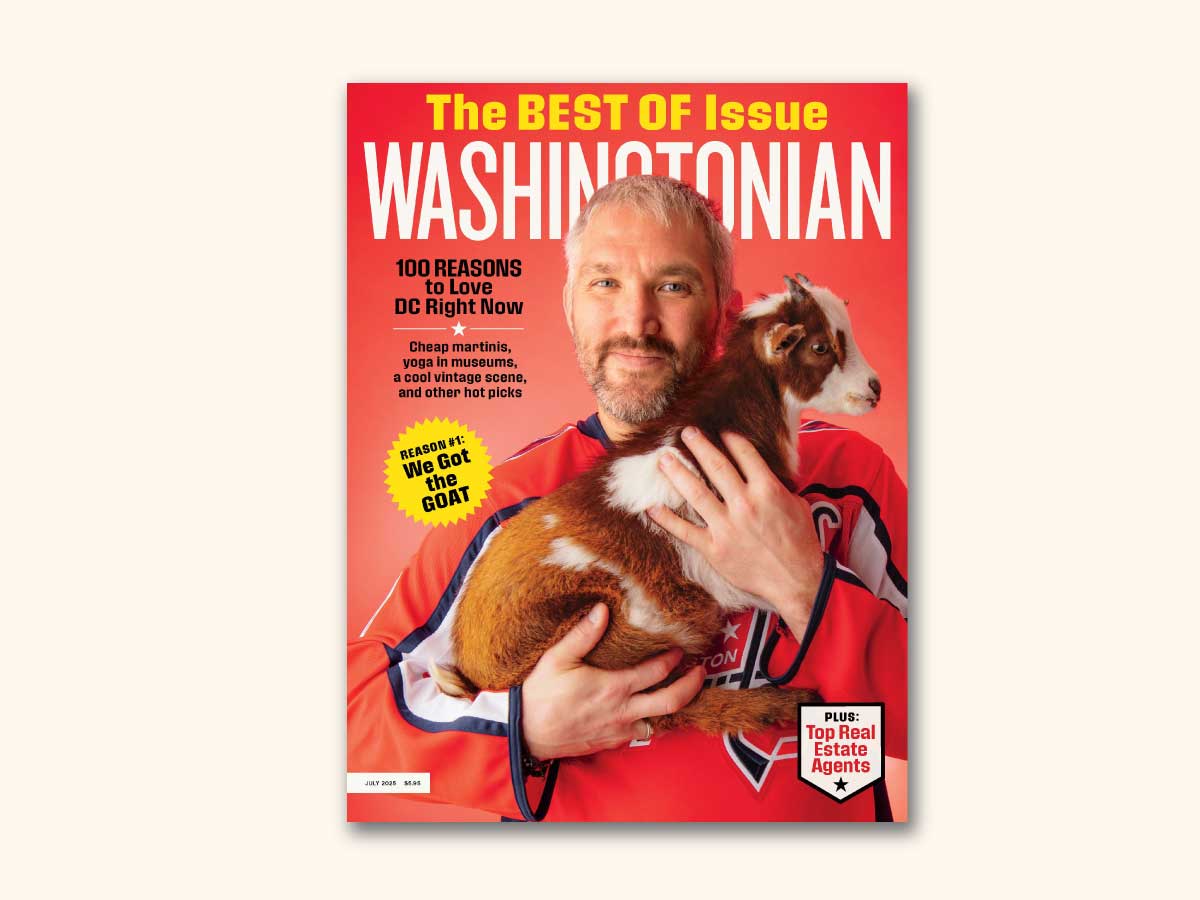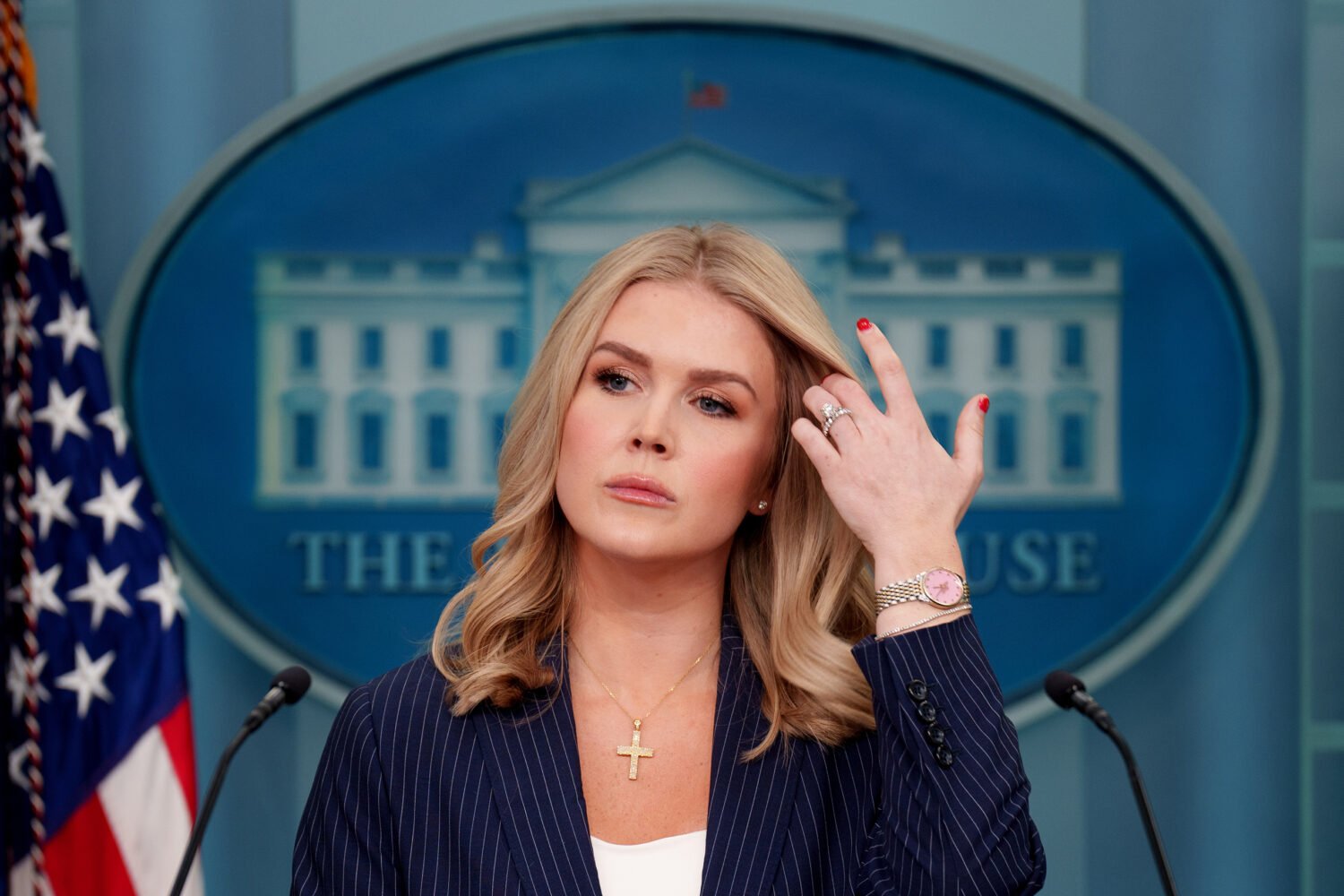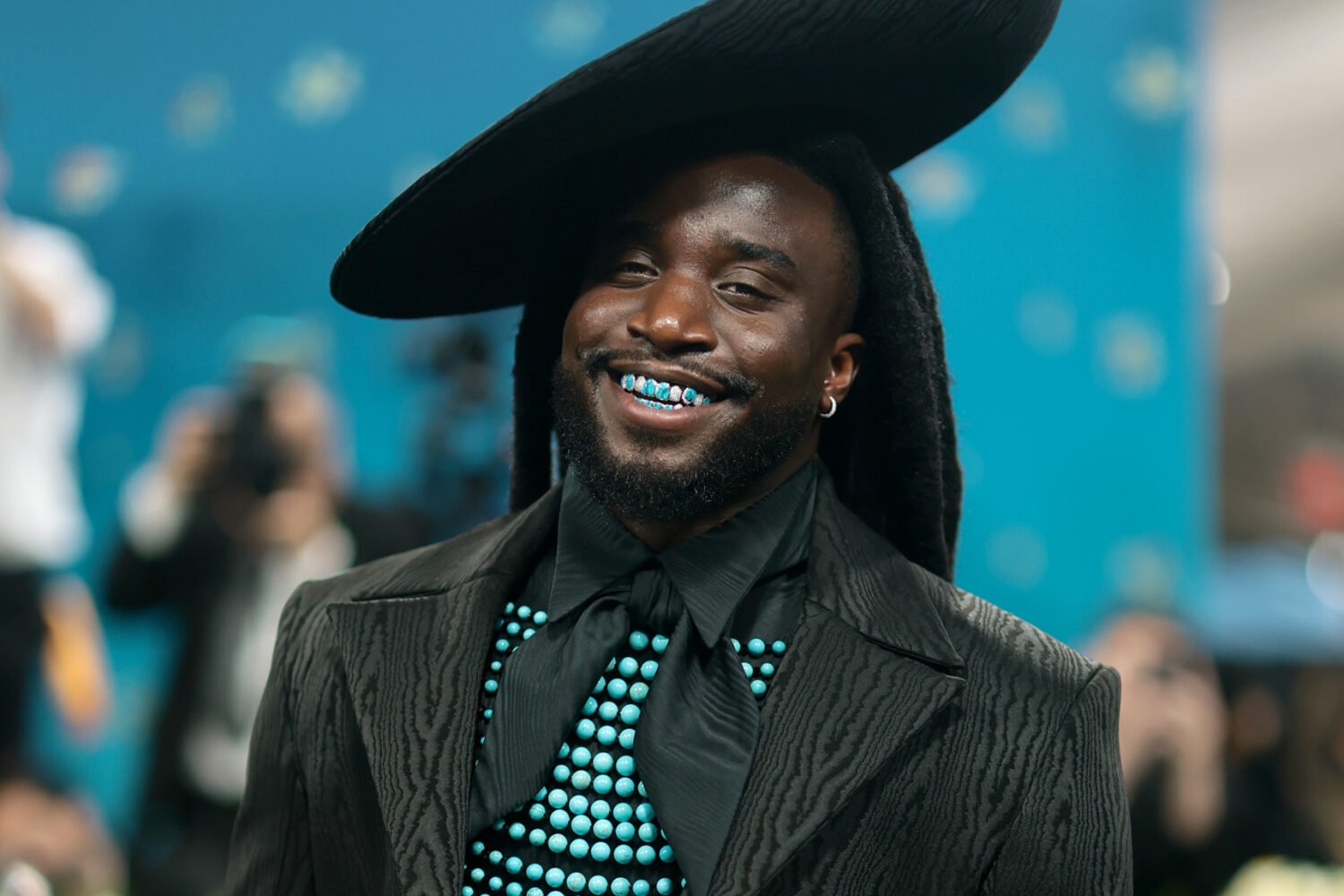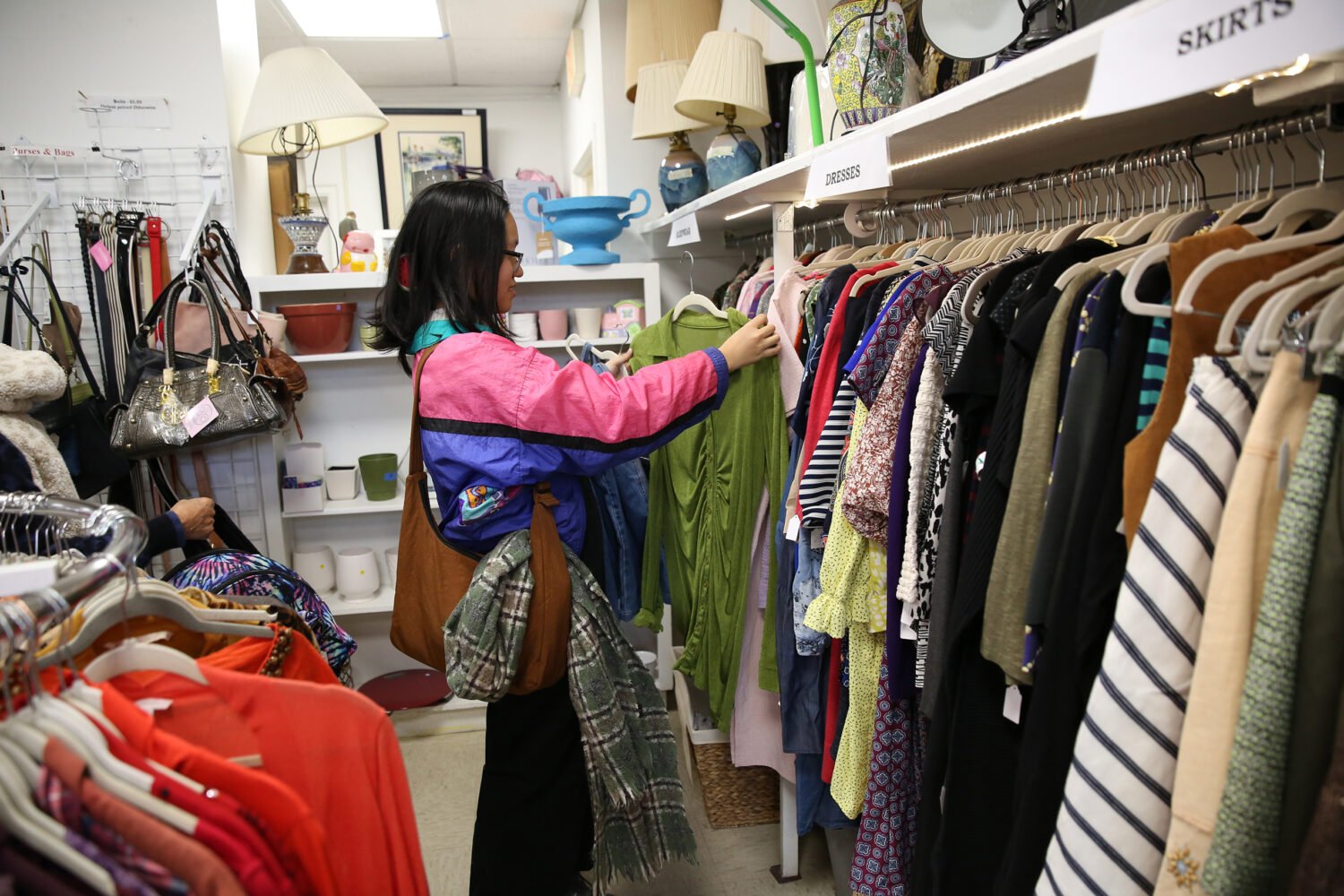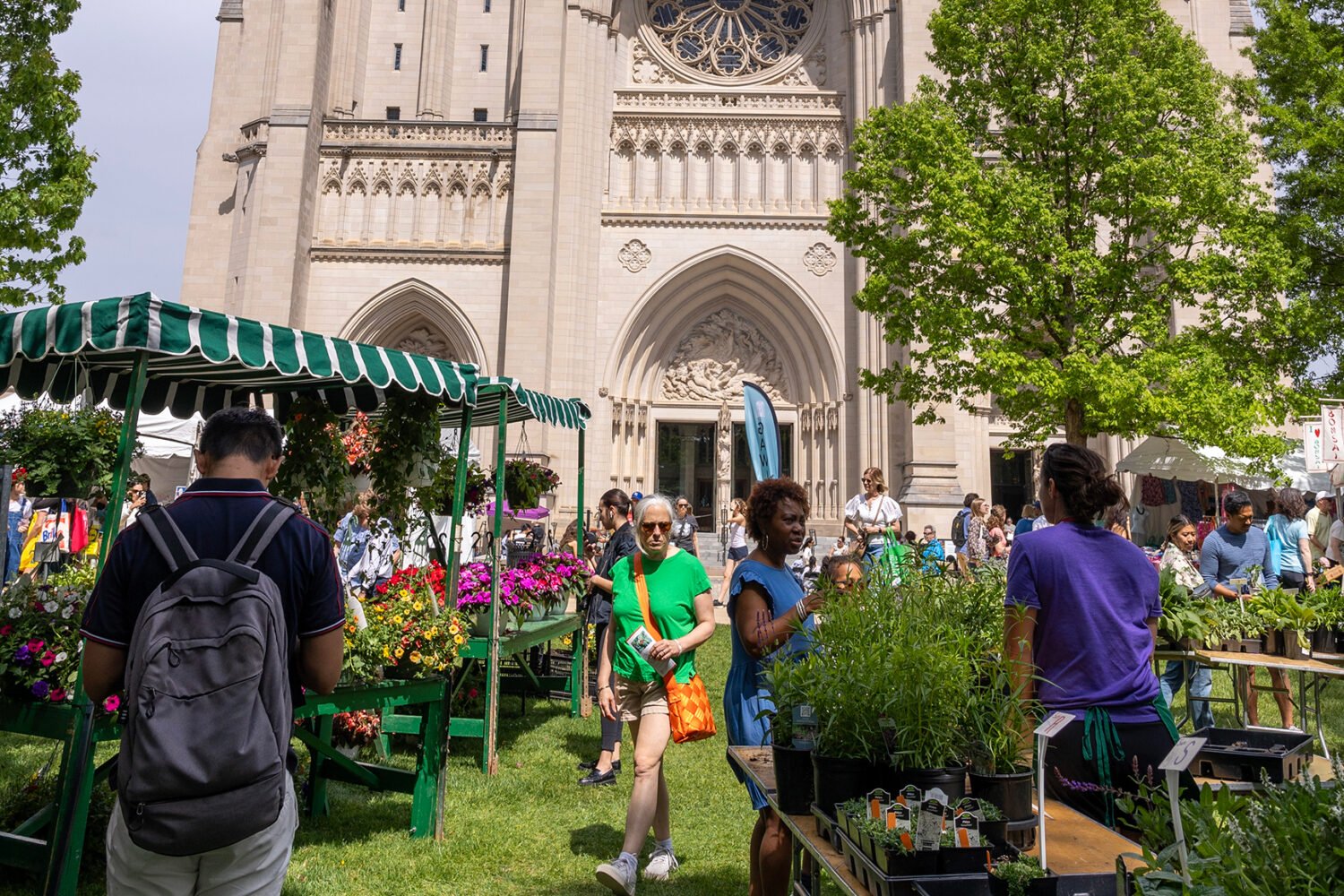Sonya Clark is a textile artist who uses flags, money, human hair, and other everyday objects to explore race and Blackness. “Tatter, Bristle, and Mend,” the first survey of Clark’s 25-year career, is on display at the National Museum of Women in the Arts through May 31.
How did growing up in DC influence your work?
When I was a kid, I didn’t think of myself as an artist, but I had a slew of artful experiences. I grew up on 16th Street, across from the family home of the ambassador of Benin. My sister and I would hang out with all the children there, and all the teenage aunties of the family would give us elaborate hairstyles—whatever was in vogue in West Africa at the time. I knew I was walking with art on my head.
What else influenced your artistic perspective?
My grandmother was a tailor by training, and she also had this beautiful mezzo-soprano voice. When I stitched with her, she would tell me stories.She’d say, “We can put our stories into the stitch.”
One of your favorite materials is hair.
Hair is the fiber that we grow. It’s literally a textile extruded from ourselves. Our hair might look quite different, but DNA-wise, basically we’re the same because we’re both humans. In that way, hair has the ability to bring us together in terms of our humanity, and yet because of texture and color, it separates us by these racial constructs: curly-haired, non-curly-haired. The more familiar the material is, the more that people potentially have a relationship to it, and therefore we can have discourse. The artwork can be in conversation with the viewer.
How does your show speak to our current moment?
This current moment is a little bit like hair—it’s a compilation of all the moments that have come before us. The only thing that’s different about now is we have video cameras on our phones. People who operated the slave industry were practicing a kind of policing. So it’s old.
I hope that my work doesn’t seem unhopeful. Ultimately, the reason this nation can watch Black and Brown people get incarcerated and killed over and over again is because of dehumanization. My work asks: How do we truly humanize people, in the fullest sense of that word, and then also deconstruct the systems that have caused the dehumanization in the first place?
